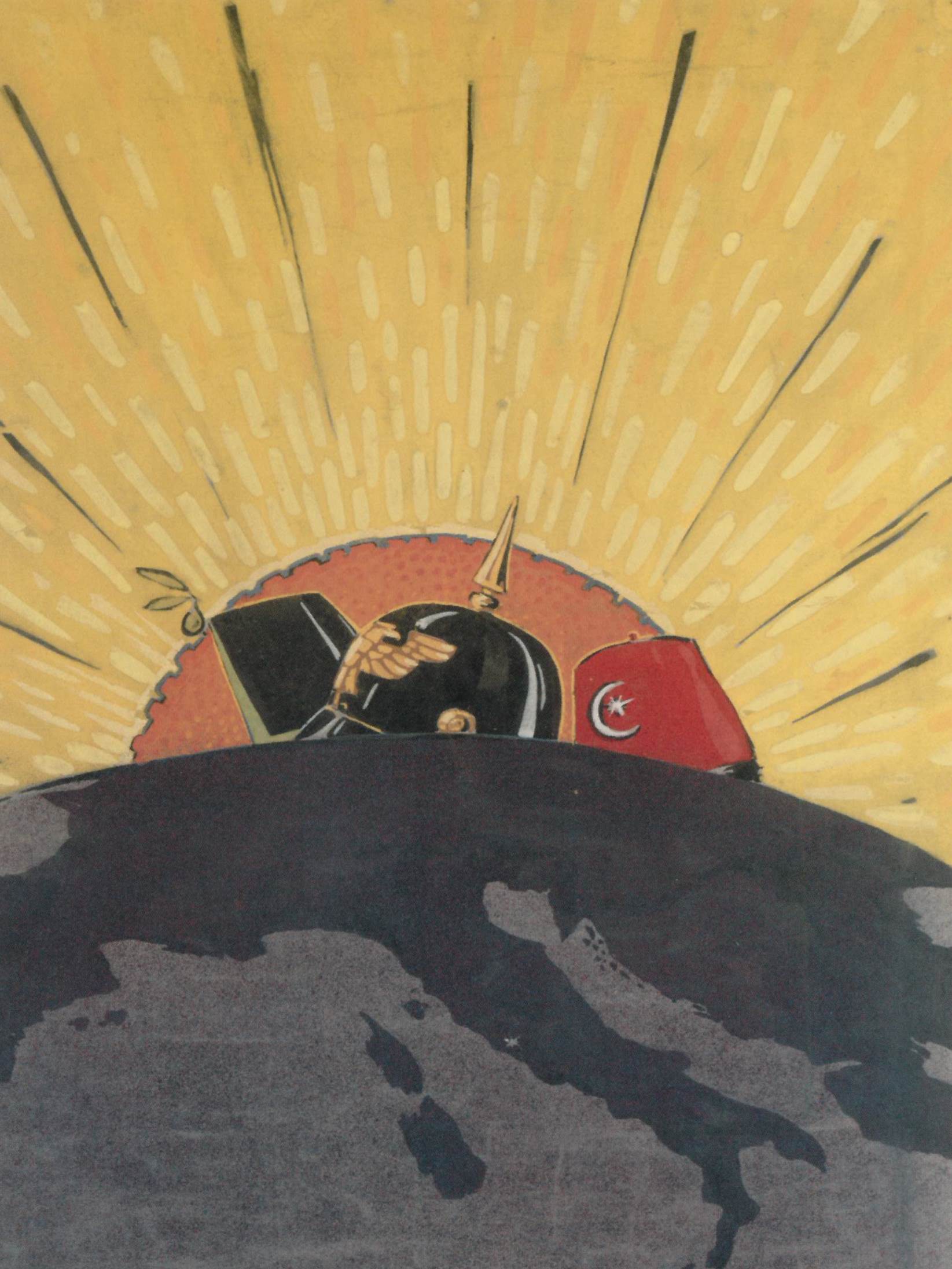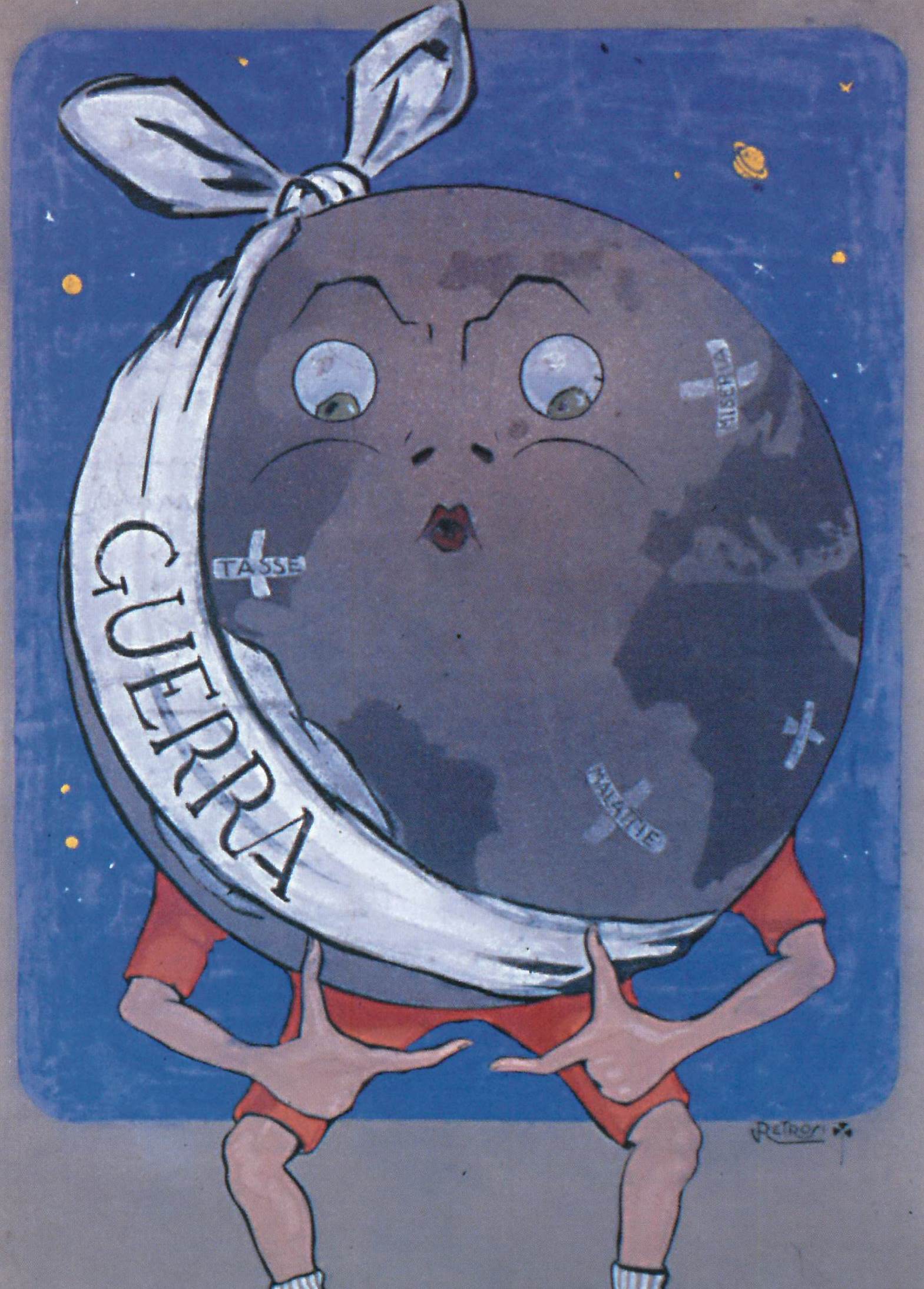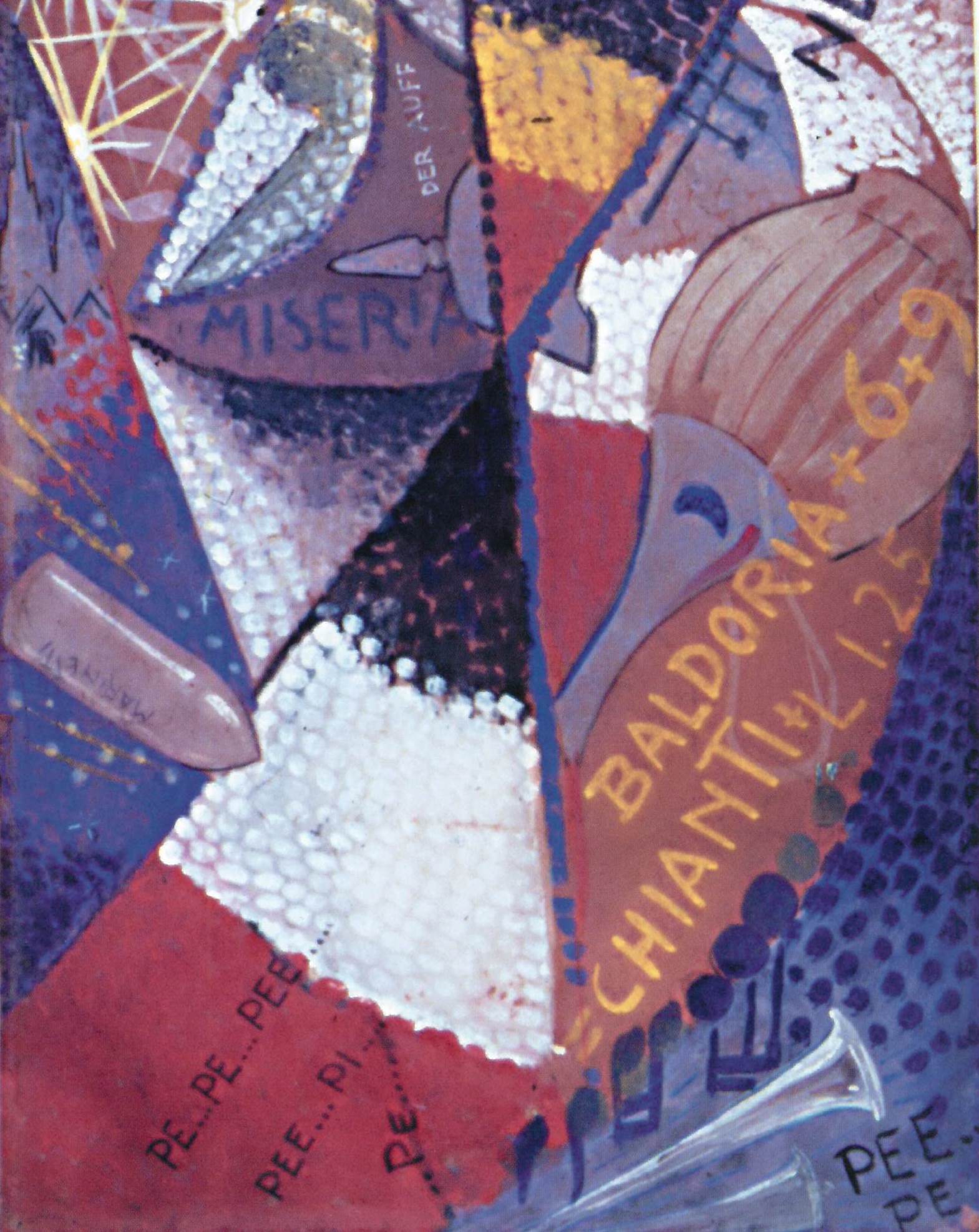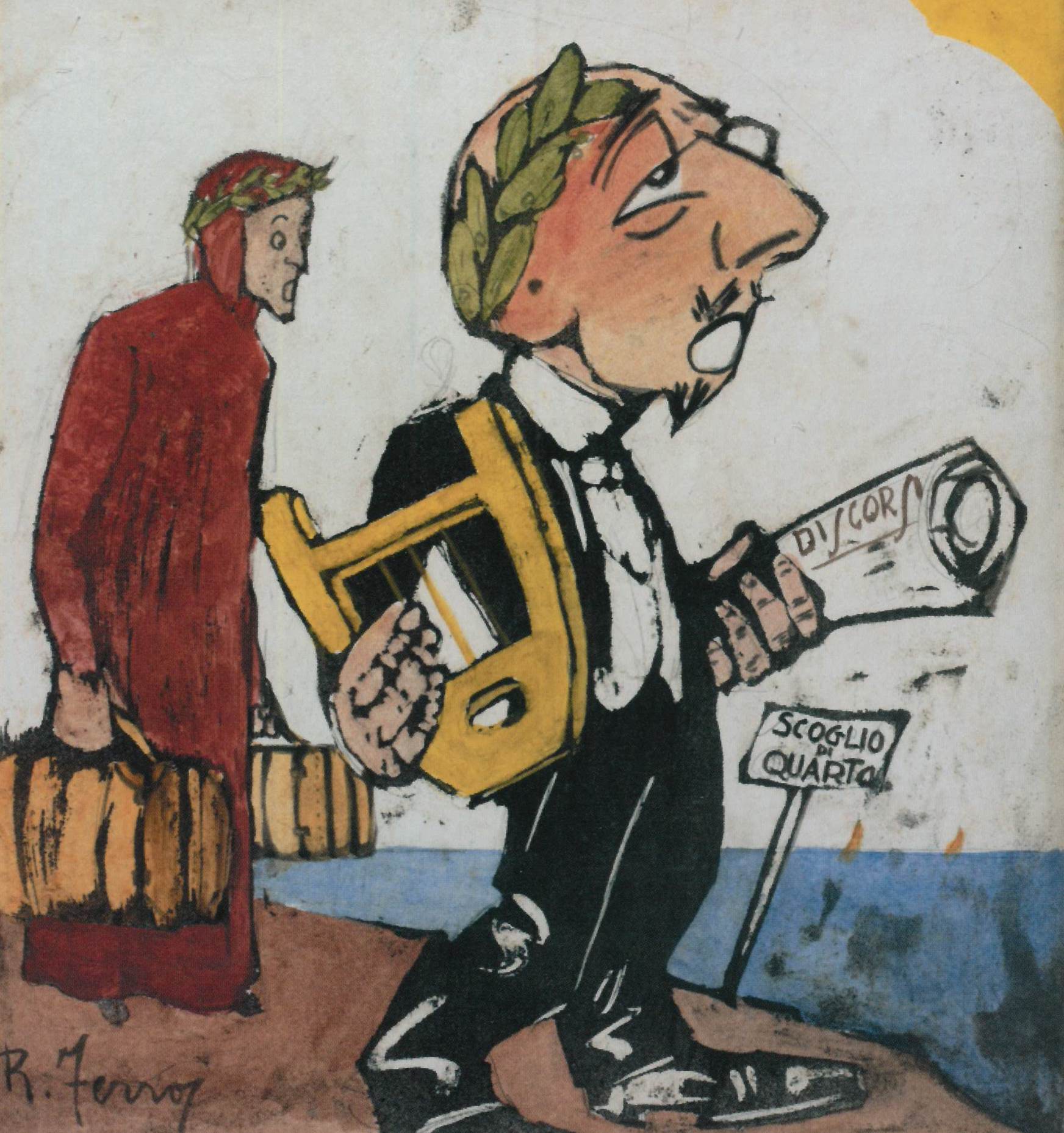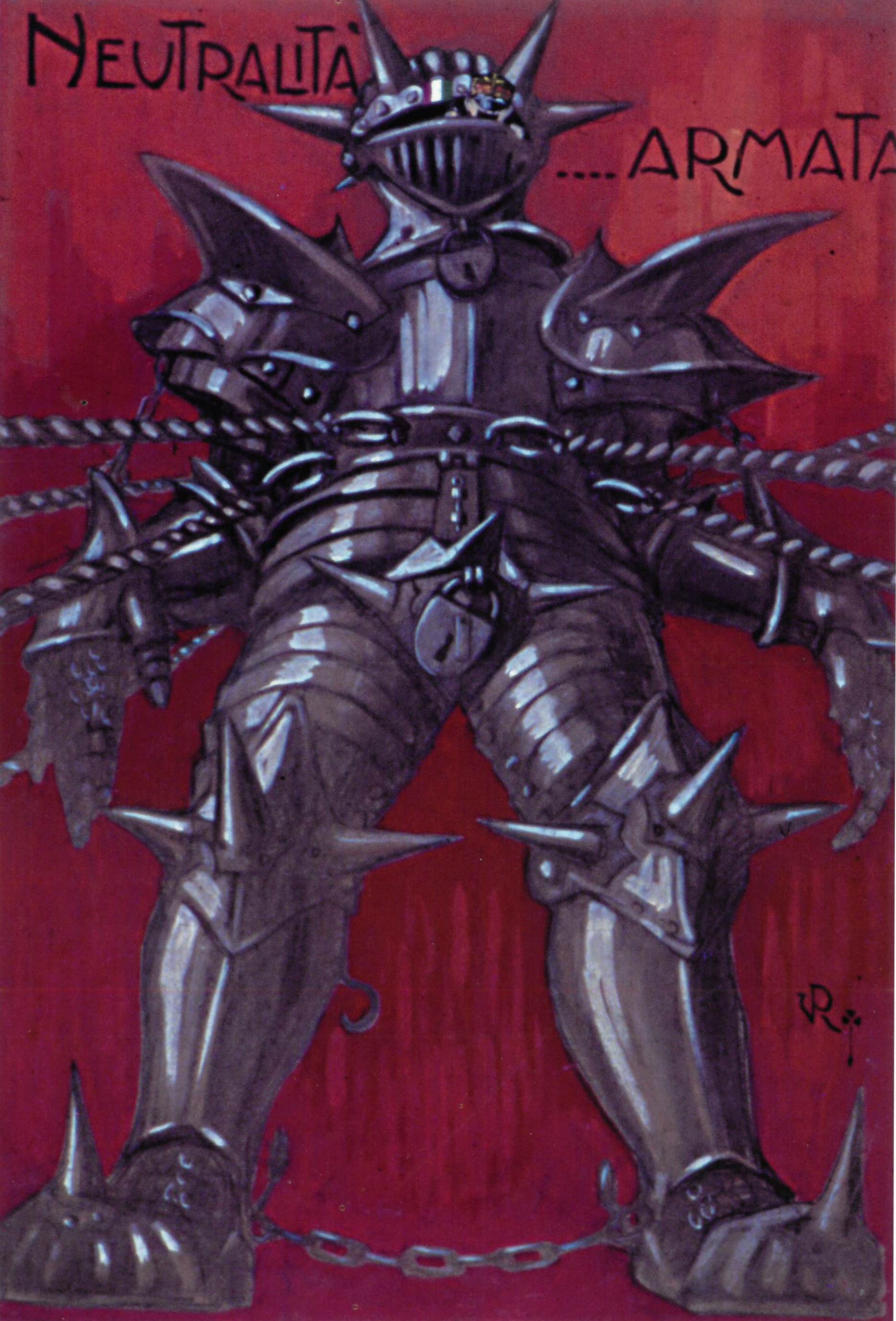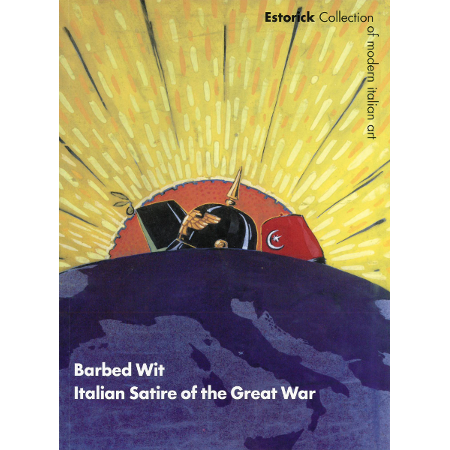This exhibition displayed thirty-six large scale original designs by little-known artists from the archives of the Imperial War Museum, London. The coloured drawings were translated into black and white postcards for mass reproduction throughout Italy. Postcards first appeared in Austria from 1869 and became increasingly popular across Europe and America, reaching a ‘golden age’ in the first decade of the 20th century.
At the outbreak of the Great War in 1914, Italy formed part of the Triple Alliance together with Germany and Austria-Hungary, yet argued that an aggressive war did not uphold the terms of the alliance. Having secured territorial gains following the Secret Treaty of London in Paris 1915, Italy joined the Triple Entente and officially declared war against Austria-Hungary one month later.
Artists used satirical postcards to criticise the action or inaction of various sectors of the Italian people during the war – the prosperous bourgeoisie being typified as materialistic war-profiteers who lacked patriotic duty. The designs, whilst demonstrating cutting satire, also show theatrical good humour in their caricatures of key figures such as the German Kaiser Wilhelm II, depicted as Medusa, and Vittorio Emanuele III, shown in Armed Neutrality as a diminutive figure peeping out of an excessively armoured suit yet shackled by the chains of indecision.
The postcards form an important and humorous source of wartime ephemera, and in these original designs the artists use a variety of different satirical devices including personification, caricature and bestialisation to create a sophisticated, shrewd, and visually appealing commentary on Italy’s involvement in the Great War.
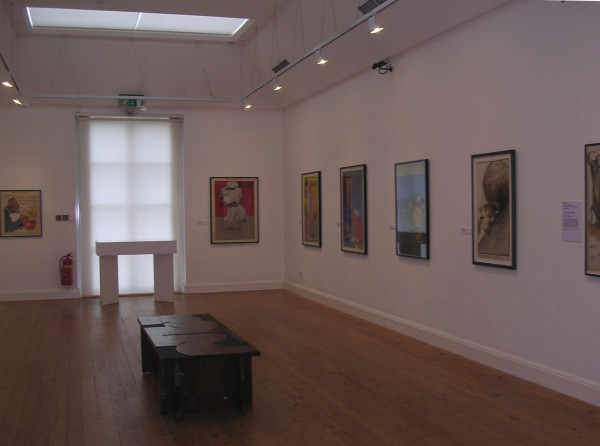
Barbed Wit: Italian Satire of the Great War in our shop
Barbed Wit: Italian Satire of the Great War
See our current exhibitions
Find out more...Discover the programme of future exhibitions
Find out more...Discover our past exhibitions
Find out more...